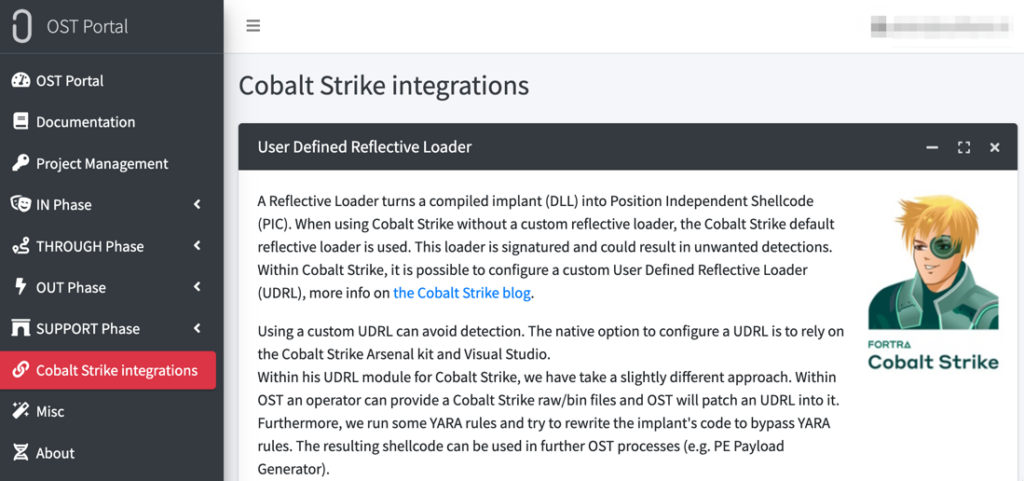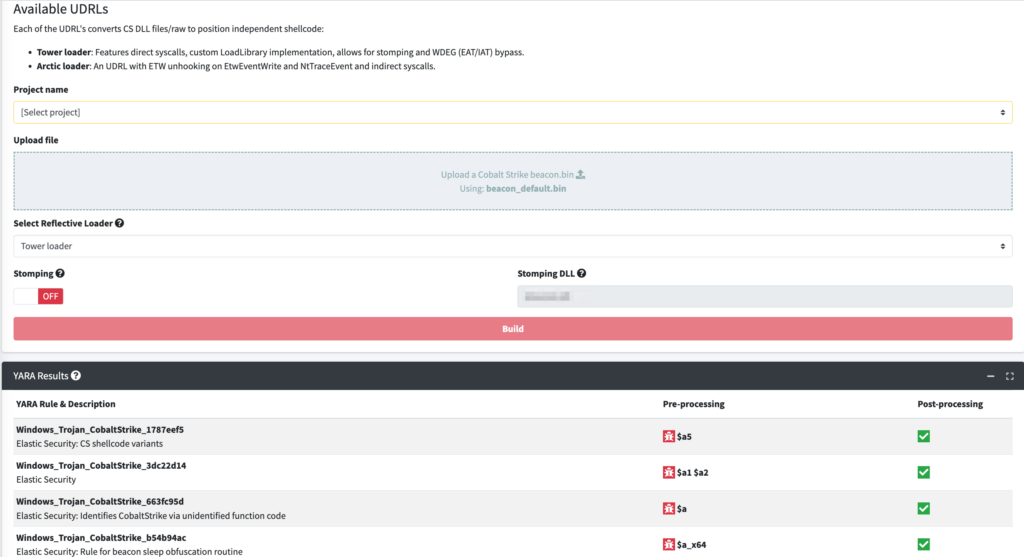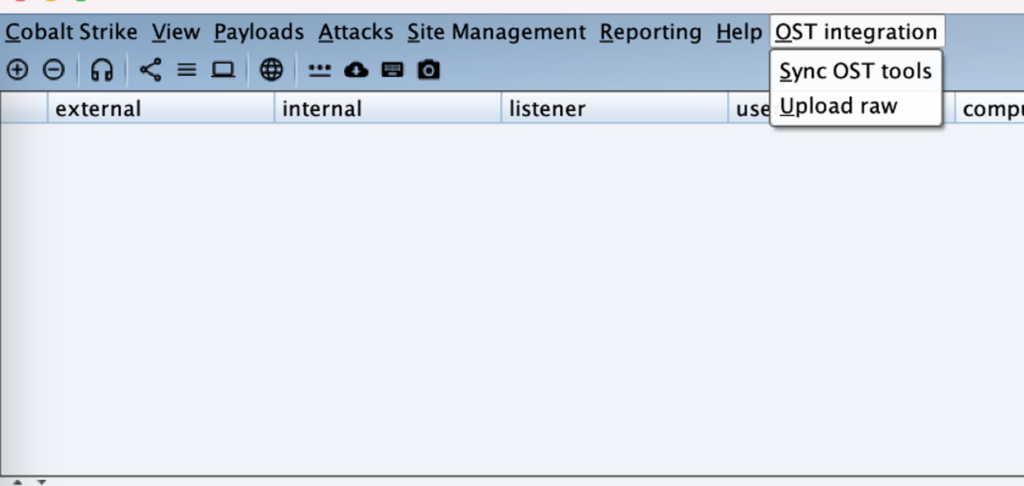
2023-7-19 23:19:10 Author: www.outflank.nl(查看原文) 阅读量:8 收藏
This is a joint blog written by the Cobalt Strike and Outflank teams. It is also available on the Cobalt Strike site.
Over the past few months there has been increasing collaboration and knowledge sharing internally between the Cobalt Strike and Outflank R&D teams. We are excited about the innovation opportunities made possible by this teamwork and have decided to align Cobalt Strike and Outflank Security Tooling (OST) closely going forward. Although we are actively collaborating, Cobalt Strike will continue to be the industry standard Command & Control (C2) framework, while OST will continue to offer a red team toolbox for all environments containing custom tradecraft that is OPSEC safe, evasive by design, and simple to use. Our vision is that Cobalt Strike and OST together will provide the best red team offering on the planet.
This blog will provide an update of the technical strategy of each product individually before giving a glimpse into the future of the two combined.
Cobalt Strike
Cobalt Strike is the industry standard Command & Control framework. Following the acquisition of Cobalt Strike by Fortra in 2020, a conscious decision was taken to follow the technical strategy employed by founder Raphael Mudge in taking Cobalt Strike to the next level. The core tenets of this strategy are:
- Stability: Cobalt Strike must remain reliable and stable; nobody wants to lose their Beacons.
- Evasion through flexibility: Since its inception, Cobalt Strike has always been an adversary emulation tool. It is designed to enable operators to mimic other malware and the TTPs they desire. Hence, in its default state, Beacon is pretty trivial to detect. This however has never been the point; Cobalt Strike has flexibility built into key aspects of its offensive chain. You can tinker with how Beacon is loaded into memory, how process injection is done, what your C2 traffic looks like etc. We don’t want to bake TTPs into Beacon which become signatured over time (Cobalt Strike’s implementation of module stomping is a good example of this). We want to enable operators to customise Beacon to use their own original TTPs. Our R&D effort will continue to focus on building in flexibility into all aspects of the offensive chain and to give operators as much control as possible over the TTPs they employ.
Outflank & OST
In September last year we were acquired by Fortra. Outflank is a security consultancy based in Amsterdam with deep expertise in red teaming and a proven track record of world class research. Our team is best known for our work on Direct Sys Calls in Beacon Object Files, various public tools, Microsoft Office tradecraft (derbycon, troopers, Blackhat Asia, brucon, x33fcon), or on the red team SIEM Redelk.
In recent years, we have taken our internal research & development and created Outflank Security Tooling (OST).
OST is not a C2 product but a collection of offensive tools and tradecraft, offering:
- A broad arsenal of offensive tools for different stages of red teaming.
- Tools that are designed to be OPSEC safe and evade existing security controls (AV/EDR).
- Advanced tradecraft via understandable interfaces, instead of an operator needing to write or compile custom low-level code.
- A knowledge sharing hub where trusted & vetted red teamers discuss tradecraft, evasion, and R&D.
- An innovative cloud delivery platform which enables fast release cycles, and complex products such as ‘compilation as a service’, while still allowing any customer to run and manage their own offensive infrastructure. Although OST is offered as a cloud model, it is possible to use the offensive tools and features offline and in air gapped environments.
Hence, it is a toolbox for red teamers made by red teamers, enabling operators to work more efficiently and focus on their job at hand. It contains features such as: a payload generator to build sophisticated artifacts and evade anti-virus / EDR products, a custom .NET obfuscator, credential dumpers, kernel level capabilities, and custom BOF implementations of offensive tools (such as KerberosAsk as an alternative to Rubeus).
Going forward, OST will continue to provide a full suite of bleeding-edge tools to solve the main challenges facing security consultants today (i.e., on prem/workstation attacks, recon, cloud etc.). Our R&D team remain active in red teaming engagements and so all these tools are being continually battle tested on live red team operations. Furthermore, OST will continue to grow as a vetted knowledge hub and an offensive R&D powerhouse that brings novel evasion, tradecraft, and tooling for its customers.
Combining forces: Cobalt Strike and Outflank Security Tooling
Having outlined the technical strategies of Cobalt Strike and OST above, it is clear that both products naturally complement each other. Therefore, we have decided to align the two products closely going forward.
In our joint roadmap, both products will stay true to their visions as outlined above. Cobalt Strike will continue to push the boundaries of building flexibility into every stage of the offensive chain, e.g. via technologies such as BOFs, and OST will continue to leverage this flexibility to deploy novel tradecraft, as well as continuously releasing stand-alone tools.
Furthermore, both teams are already cooperating extensively, which is further advancing innovation and product development. Outflank’s experience in red teaming is providing valuable insight and feedback into new Cobalt Strike features, while joint research projects between the Cobalt Strike and Outflank R&D teams is already generating new TTPs. Together, we are regularly evaluating offensive innovation and adjusting the roadmap of both products accordingly. This ensures that both Cobalt Strike and OST remain cutting edge and that any new features are designed to integrate seamlessly between the two.
This approach is already bearing fruit; we recently released a feature focusing on Cobalt Strike Integrations, specifically custom User Defined Reflective Loaders, which we will explore in more detail below.
Case Study : User Defined Reflective Loaders
Cobalt Strike has relied on reflective loading for a number of years now and the team has endeavoured to give users as much control over the reflective loading process as possible via Malleable C2 options. However, they always want to push the boundaries in terms of building flexibility into Cobalt Strike so that users can customize Beacon to their liking. This was why they introduced User Defined Reflective Loaders (UDRLs). This enables operators to write their own reflective loader and bake their own tradecraft into this stage of the offensive chain. Furthermore, the team recognises that UDRLs can be challenging to develop, which is why they started their own blog series on UDRL development (with a second post on implementing custom obfuscation dropping soon).
As long-term Cobalt Strike users, we also recognised the complexities and time constraints that red teams face when developing custom UDRLs. Hence, we decided to put our own experience and R&D into developing novel UDRLs as part of their Cobalt Strike Integrations feature on OST, as shown below:

With this feature, it is now possible in OST to stomp a custom UDRL developed by Outflank onto a given Beacon payload. There are currently two custom loaders available and more are in the pipeline. Most pertinently, operators do not need to get into the weeds with Visual Studio/compilers, while still being able to use advanced UDRLs that are OPSEC safe and packed with Outflank R&D.
Bypassing YARA signatures
Furthermore, OST will also check the stomped Beacon payload against a number of public YARA signatures and automatically modify Beacon to bypass any triggering rules, as demonstrated below:

Cobalt Strike has previously blogged about YARA signatures targeting Beacon and so this is an important ‘evasion in depth’ step built into payload generation within OST.
Once Beacon has been equipped with a custom UDRL, and YARA bypasses have been applied, the payload can be seamlessly integrated with other OST features. For example, we can import the new payload into OST’s payload generator to create advanced artifacts which can be used for phishing, lateral movement, or persistence. This whole workflow is demonstrated below:
Video 1: Recording of the User Defined Reflective Loader feature as available in OST
This feature is a great example of the joint roadmap in action; both the UDRL stomper and the YARA module originated from collaboration and shared knowledge between the Cobalt Strike and Outflank teams.
The Road Ahead
- Novel tradecraft: The UDRL and YARA integration is just the first step. OST’s Cobalt Strike integrations will be further extended with new features, such as custom sleep masks and additional YARA and OPSEC checks. This allows customers of both OST and Cobalt Strike to utilise advanced tradecraft and the flexibility of Cobalt Strike without needing to write low level code.
- Better user workflows: Instead of manually downloading custom BOFs/tools from OST, we are working on implementing a ‘bridge’ between OST and Cobalt Strike. This bridge would also allow users to upload Beacons to OST and generate advanced payloads quickly; allowing for smoother and more efficient workflows.

- New approaches of software delivery: OST has taken a unique approach in offensive software compilation & distribution, utilising just-in-time compilation and anti-piracy via its cloud delivery model. In due course Cobalt Strike will start leveraging a similar approach as OST; enabling new possibilities and evasion techniques within Beacon. The first step of this will be to migrate Cobalt Strike to a new download portal.
- Team collaboration: Lastly, the OST and Cobalt Strike teams are increasingly collaborating on a number of low-level areas. These deep technical discussions on evasion and novel TTPs between hands-on red teamers, offensive R&D members, and the Cobalt Strike developers provides valuable feedback and accelerates product development.
Closing Thoughts
We hope that this blog provides an informative update to the technical strategy of both products going forward. In summary:
The Outflank and Cobalt Strike teams are cooperating to get the most value for our customers. Both Cobalt Strike and OST will stay close to their roots: Cobalt Strike will remain focused on stability and flexibility while OST offers a broad arsenal of offensive tradecraft. Furthermore, the collaboration between the two teams will enable enhanced product innovation and ensure that new features for both products are designed to work seamlessly together.
If you are interested in either Cobalt Strike or OST, please refer to Cobalt strike’s product info and demo video, or OST’s product info and demo videos for more info. Cobalt Strike and OST bundles are available now and you can request a quote here.
如有侵权请联系:admin#unsafe.sh